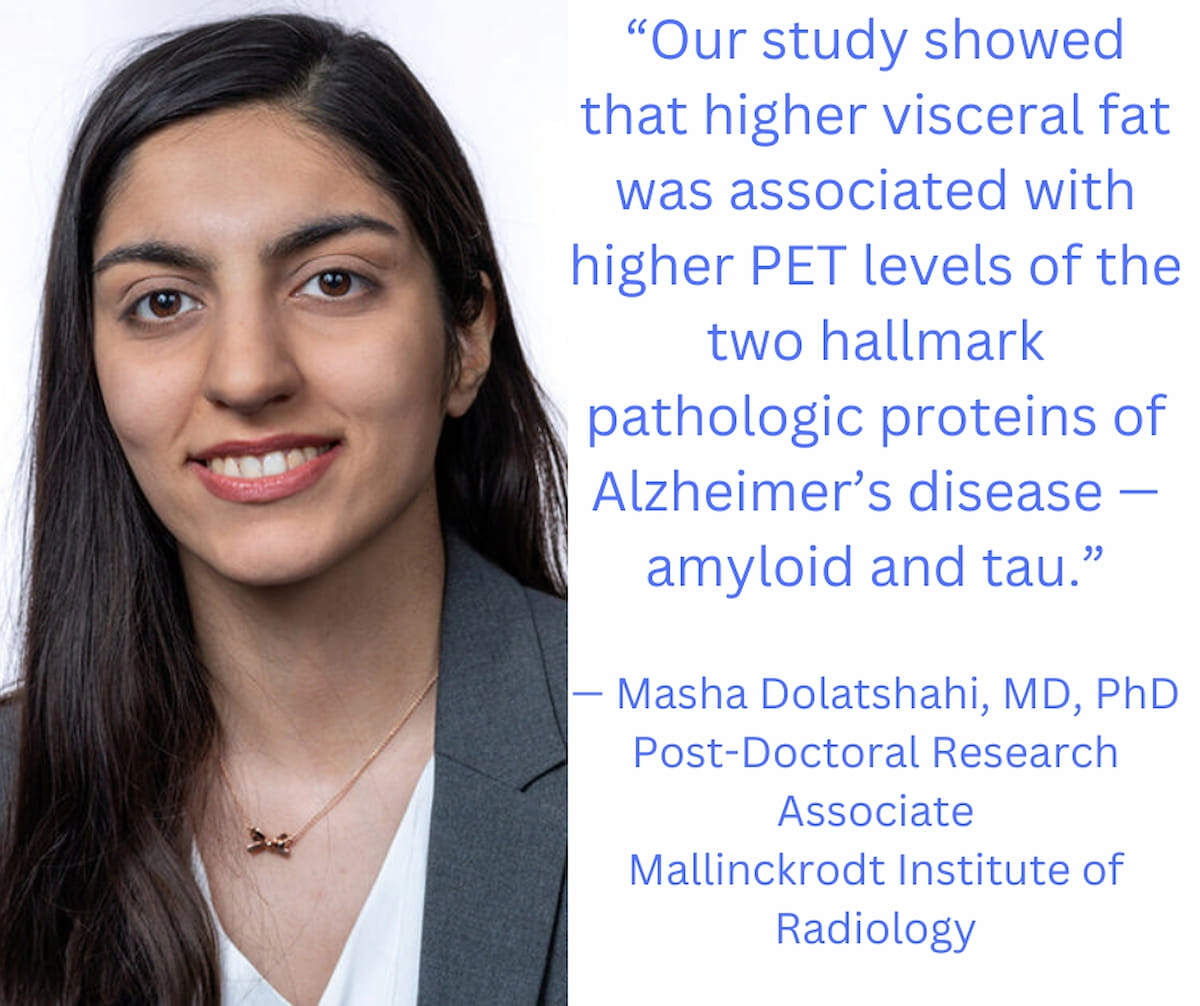New PET and MRI Research Suggests that Visceral Fat Reduction May Prevent or Delay Alzheimer’s Disease
Higher visceral adipose tissue reportedly accounted for 77 percent of the association between Alzheimer’s disease and high body mass index (BMI), according to new research presented at the Radiological Society of North America (RSNA) conference.
Visceral fat reduction may have a significant impact in preventing or delaying the onset of Alzheimer’s disease in obese patients, according to emerging findings from positron emission tomography (PET) and magnetic resonance imaging (MRI) research.
For the study, presented at the Radiological Society of North America (RSNA) conference, researchers reviewed brain PET, abdominal MRI and metabolic assessment data for 80 people with an average age of 49.4 and body mass index (BMI) of 32.31. Over 57 percent of the cohort were obese, according to the study.1
The researchers found higher Centiloid scores in obese patients and higher visceral adipose tissue (VAT) accounted for 77 percent of the correlation between high BMI and the development of Alzheimer’s disease. A mediation analysis revealed that VAT plays a prevailing role in mediating the impact of BMI on Centiloid scoring, according to the study authors.1

"Our study showed that higher visceral fat was associated with higher PET levels of the two hallmark pathologic proteins of Alzheimer's disease — amyloid and tau," noted Masha Dolatshahi, M.D., Ph.D., a lead author of the study and a post-doctoral research associate at the Mallinckrodt Institute of Radiology at the Washington University School of Medicine in St. Louis. "To our knowledge, our study is the only one to demonstrate these findings at midlife where our participants are decades out from developing the earliest symptoms of the dementia that results from Alzheimer's disease."
(Editor’s note: For additional coverage from the 2024 RSNA conference, click here.)
The study authors also noted significant correlations to higher Centiloid scores with increased subcutaneous adipose tissue, BMI, and Homeostatic Model Assessment for Insulin Resistance (HOMAIR) evaluations.
"A key implication of our work is that managing Alzheimer's risk in obesity will need to involve targeting the related metabolic and lipid issues that often arise with higher body fat," explained Cyrus A. Raji, M.D., Ph.D., a senior author of the study and an associate professor of radiology at the Mallinckrodt Institute of Radiology.
Reference
1. Dolatshahi M, Commean P, Naghashzadeh M, et al. The association between body fat localization, insulin resistance, and amyloid burden in midlife. Poster presented at the Radiological Society of North America (RSNA) 2024 110th Scientific Assembly and Annual Meeting Dec. 1-5, 2024. Available at: https://www.rsna.org/annual-meeting .
What New Research Reveals About Novice Use of AI-Guided Cardiac Ultrasound
April 4th 2025In a study recently presented at the American College of Cardiology (ACC) conference, researchers found that novice use of AI-guided cardiac ultrasound after an AI-enabled electrocardiogram increased the positive predictive value for reduced left ventricular ejection fraction (LVEF) or aortic valve stenosis by 33 percent.
The Reading Room: Artificial Intelligence: What RSNA 2020 Offered, and What 2021 Could Bring
December 5th 2020Nina Kottler, M.D., chief medical officer of AI at Radiology Partners, discusses, during RSNA 2020, what new developments the annual meeting provided about these technologies, sessions to access, and what to expect in the coming year.
RSNA 2020: Addressing Healthcare Disparities and Access to Care
December 4th 2020Rich Heller, M.D., with Radiology Partners, and Lucy Spalluto, M.D., with Vanderbilt University School of Medicine, discuss the highlights of their RSNA 2020 session on health disparities, focusing on the underlying factors and challenges radiologists face to providing greater access to care.
GE HealthCare Launches PET MPI Agent Flyrcado at ACC Conference
March 28th 2025The positron emission tomography myocardial perfusion imaging (PET MPI) agent, which offers a significantly higher half-life than other cardiac PET agents, was recently granted pass-through payment status by CMS that will go into effect on April 1, 2025.
New Collaboration Offers Promise of Automating Prior Authorizations in Radiology with AI
March 26th 2025In addition to a variety of tools to promote radiology workflow efficiencies, the integration of the Gravity AI tools into the PowerServer RIS platform may reduce time-consuming prior authorizations to minutes for completion.